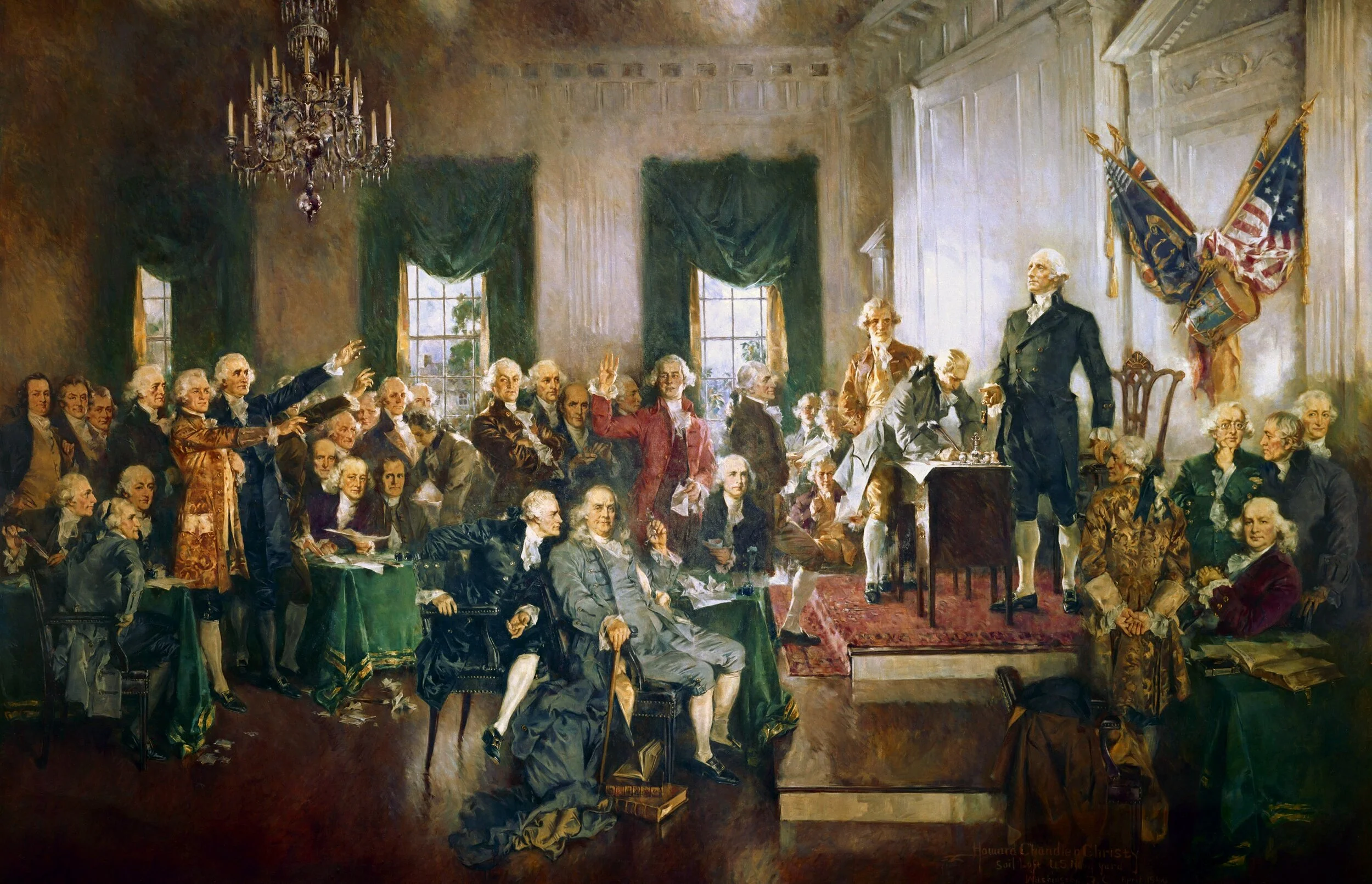Rewriting the Constitution
/Most citizens agree that the US Constitution is a great thing. Many would say that the Constitution is perfect and should not be changed. But Constitutional experts disagree. The experts, when asked what should be done about the way the country is going, recommend changes to the Constitution. Even as they heap praises on James Madison and the other founders, they recognize that improvements are possible. And needed.
In 2020, the National Constitution Center asked three groups of political scientists and law professors to write a new constitution for America. There was nothing revolutionary about this. They all knew they were engaging in a thought experiment. The goal was to see what new ideas they could come up with, and whether different people would offer compatible suggestions. The sponsors picked three conservative, three libertarian, and three progressive experts and invited them to write new constitution for America that would conform to their particular perspectives. The results are presented in detail here, and summarized in a December 2020 article in The Atlantic.
At the head of the project is Jeffrey Rosen, who said:
[A]ll three teams choose to reform the Constitution rather than replace it. And all three focus their reform efforts on structural and institutional protections for liberty and equality rather than creating a laundry list of new rights. As [Libertarian scholar Ilya] Shapiro put it in a recent interview about the project, “Why start from scratch when we can build on James Madison’s genius?”
Why indeed? Any change to our governmental processes should retain as much of the good stuff as possible. It should be based on as much wisdom as possible, including “James Madison’s genius.” But it should also include innovations since James Madison, from other American scholars and from other nations’ experiences in government and civil society. It is good to admire the American founders. But it is foolish to think nothing new has been learned since their day or that nothing better is possible today.
The three teams of scholars proposed many changes to the US Constitution. Each group tried to move the country in a better direction – according to their baked-in preferences. But more often than Rosen expected, at least two groups recommended the same change. Some of the recommendations include:
Limits to presidential power
A national popular vote for president (instead of the Electoral College)
Ranked-choice voting instead of primary elections
Elect senators by state legislatures instead of popular voting
More explicit limits on federal power, e.g. Commerce Clause
Prohibit states from subsidizing businesses
Allow a majority of states to veto federal law
Require the federal government to balance its budget
Set term limits (18 years) for Supreme Court justices
Both the conservative and progressive committees recommended tighter gun control. The conservative perspective recognized a right to posess weapons for protection or recreation, but still allowed for “reasonable regulations on the bearing of arms, and the keeping of arms by persons determined, with due process, to be dangerous to themselves or others.” The progressive recommendation said something similar, but tilted more in the direction of making gun ownership a privilege rather than a basic right.
The balance of powers among the three branches of the federal government is one thing that all three groups tried to strengthen. Here’s Rosen again:
[A]ll three Constitutions embrace structural reforms to ensure that the balance among presidential, congressional, and judicial power is closer to what the original Constitution envisioned, with all three branches checking each other, rather than an imperial president and judiciary checking a passive and polarized Congress.
You can click on the link above to learn more about the process and to read the three lengthy document produced by the teams.
This project by the National Constitution Center is praiseworthy. But it is only a small-scale exercise. The National Constitution Center involved only nine people. Instead of looking for the full range of opinion, they invited only people known to hold three specific perspectives – conservative, progressive, and libertarian. Instead of engaging with all kinds of citizens (unskilled laborers, stay-at-home mothers, the disabled, etc.) they listened only to tenured professors at prestigious universities and think tanks. Most of all, they set a short timeframe and forced the volunteers to whip out their results quickly.
Projects like this one by the National Constitution Center show that people can discuss big changes to the Constitution. it is not disloyal, nor a waste of time, nor foolish. Nothing final emerged from this project. But it was useful and it encourages other groups to get together and ponder their own ideas.
As other groups of citizens launch other, longer, more thorough, and more ambitious efforts, the chances are good that sooner or later, one of them will propose a new constitution for America that will earn popular support and move the country into the 21st century.
Think:
Does it surprise you that top national scholars and experts agree that the Constitution needs to be changed?
Does it surprise you that the top scholars’ suggestions aren’t very radical or transformative?








